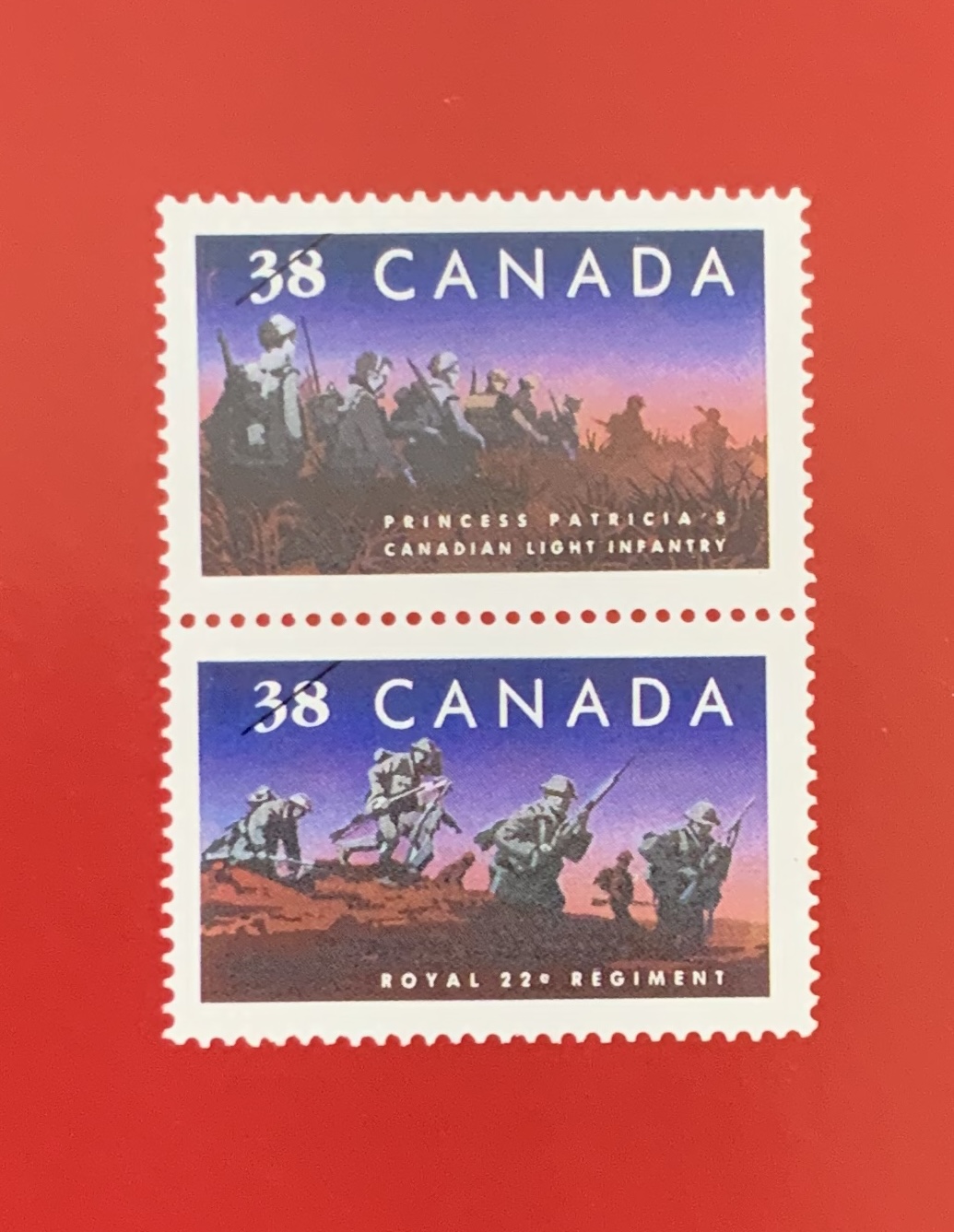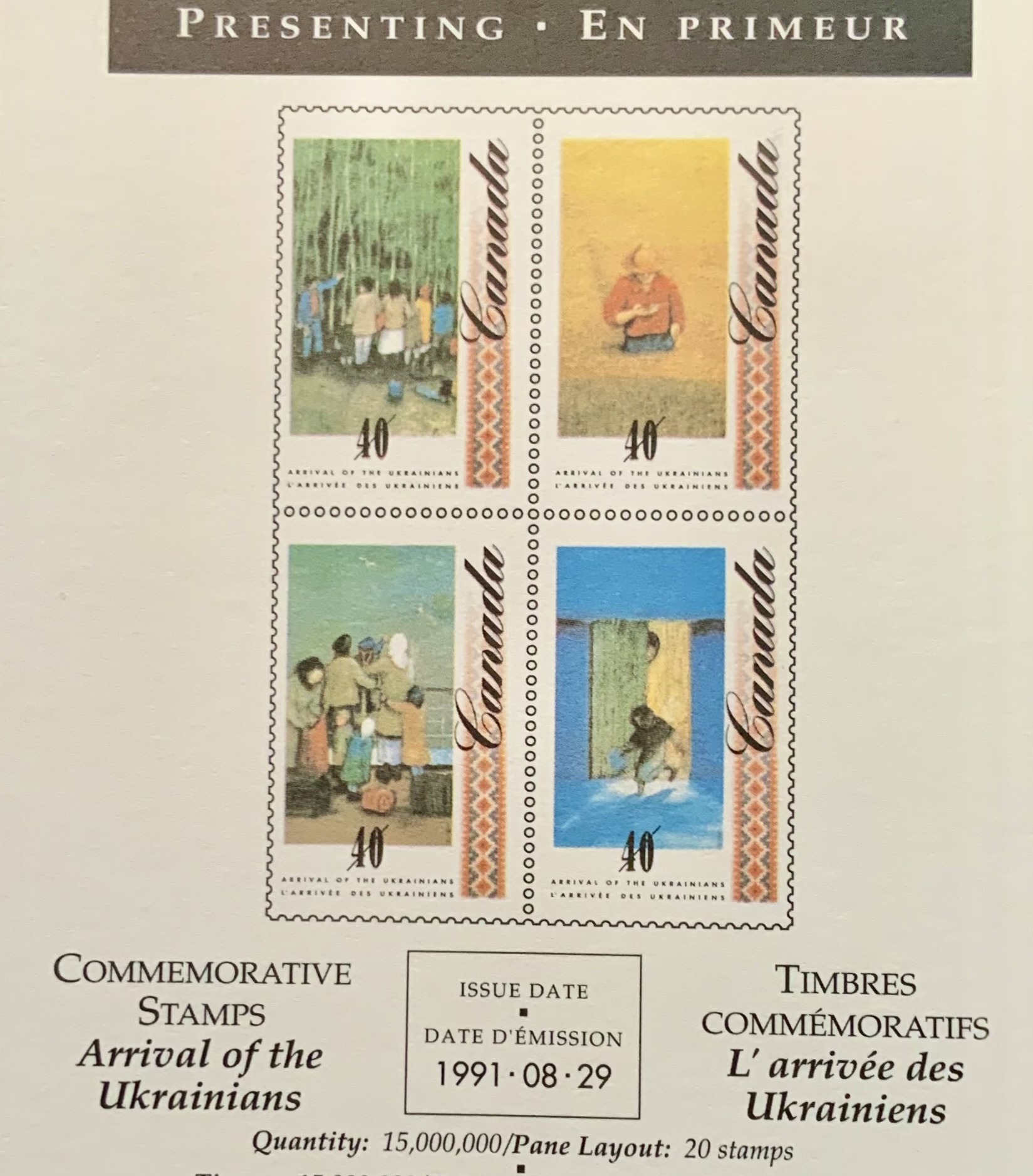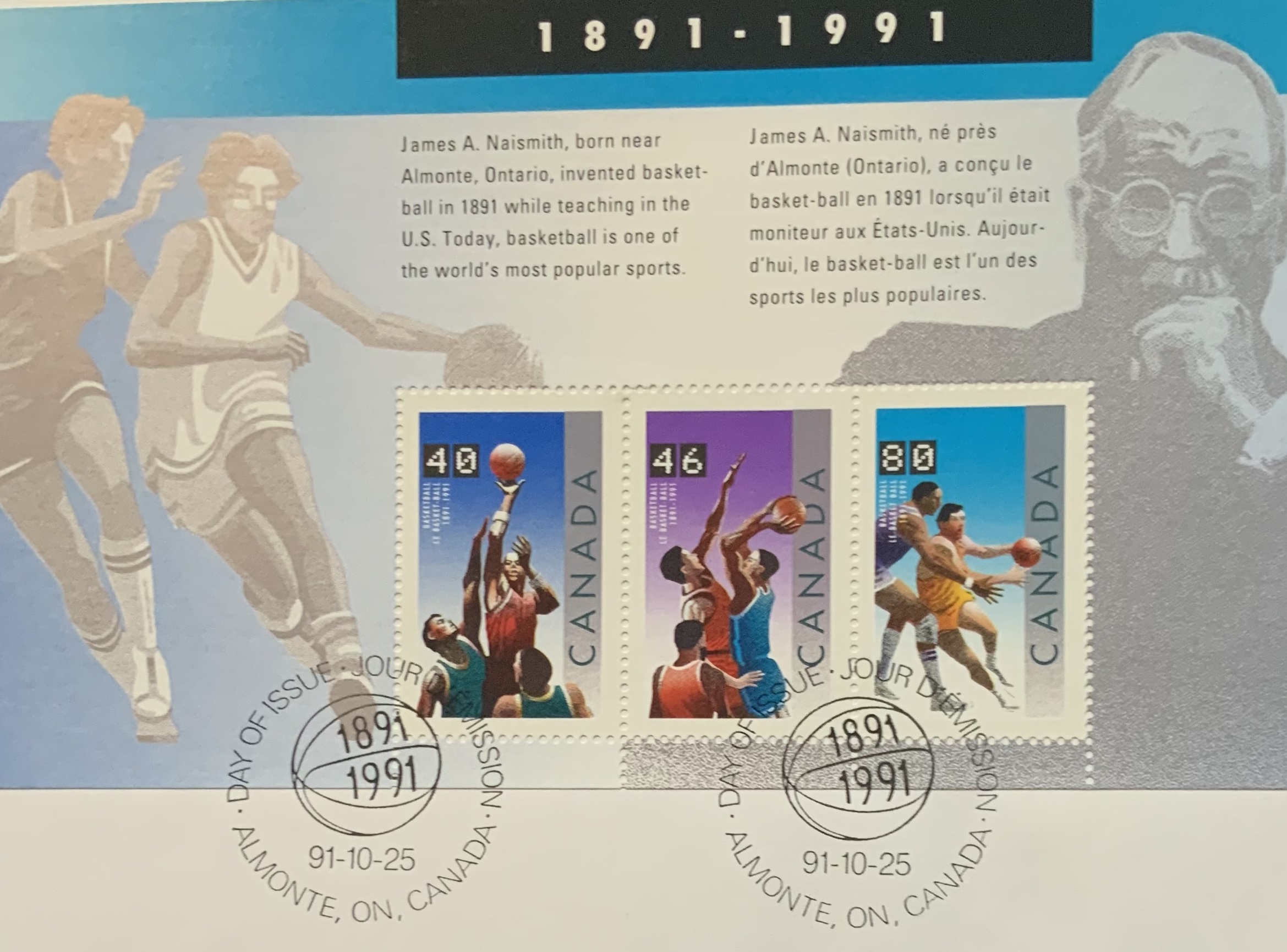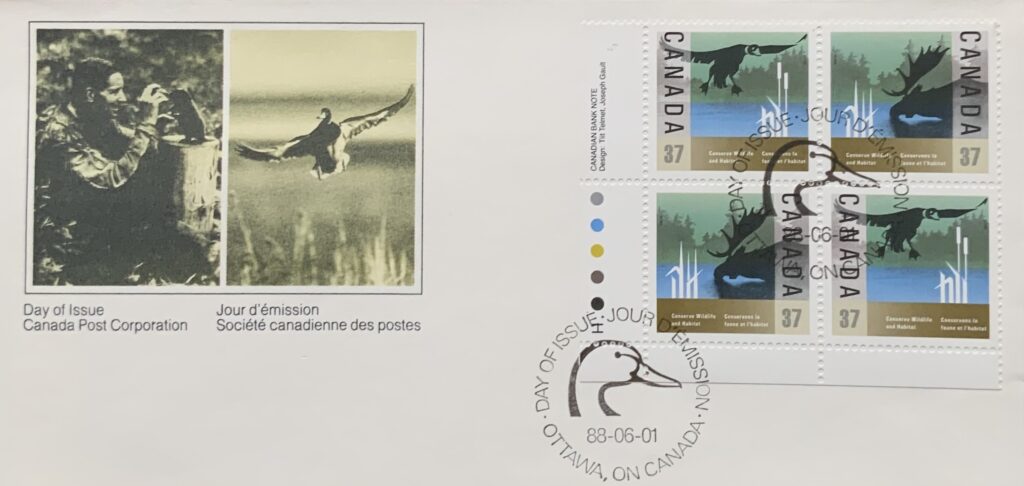
Telmet was born in Estonia in 1942. As The Design Professionals of Canada (DesCan) writes, his family fled the Soviet occupation, spending six years in Germany as displaced persons before emigrating to the United States in 1950. After completing his early education in the U.S., “he studied architecture at the University of Michigan, but transferred to Western Michigan University, where he received a B.S. degree with a graphic design major in 1966.”
After building design experience early on in California and Minnesota, in 1971, he moved to Toronto, joining Stuart Ash at Gottschalk + Ash International. Telmet became a partner in 1978 before founding his own firm, Telmet Design Associates, in 1985. His work spanned everything from corporate identities to signage and, of course, stamp design—a field he loved and truly excelled at.
The first stamps Telmet designed for Canada Post were in 1988: two stamps about wildlife and habitat conservation. This was together with Joseph Gault, who worked for Telmet. As Telmet explained in a 2012 lecture for VEMU Estonian Museum Canada, “…this stamp issue draws attention to the need to preserve our environment… Somber graphic styles convey a sense of threat…”
Each stamp is a miniature masterpiece that balances artistry and clarity. As indicated by Telmet’s close friend Jaan Meri, the greatest challenge of stamp design was to “create an image that told a story.” As Telmet said in his lecture, “There is charm in simplicity.” and “If a visual element has no meaning, why use it?” In those two sentences we can ascertain a lot about his design practice.
He believed a designer’s role was to remove their own personality from the work, instead solving the client’s problem with elegance and precision. This ethos shone through in his stamps, where storytelling and restrained aesthetics coexisted harmoniously.
Telmet’s professional philosophy, “less is more,” was evident in his work. He focused on simplicity, ensuring that every element served a purpose. He believed a designer’s role was to remove their own personality from the work, instead solving the client’s problem with elegance and precision. This ethos shone through in his stamps, where storytelling and restrained aesthetics coexisted harmoniously.
Among Telmet’s many designs, his stamp design of Oscar Peterson stands out as his personal favourite. It was released on August 15th, 2005, to commemorate the famous jazz pianist’s 80th birthday. As Tõnu Naelapea noted in his report about the stamp in Estonian World Review, it was a historic first—honouring a living Canadian other than the Monarch. Describing the portrait and overlapping image of Peterson’s hands in action, Naelapea continues, “The treatment was executed in duotone rather than four colours. The portrait is in sepia while the keyboard has bluer, cooler hue… Telmet explained that it was important to focus on Oscar Peterson, so he deliberately kept the design monochromatic in tone and the typography to a minimum.”
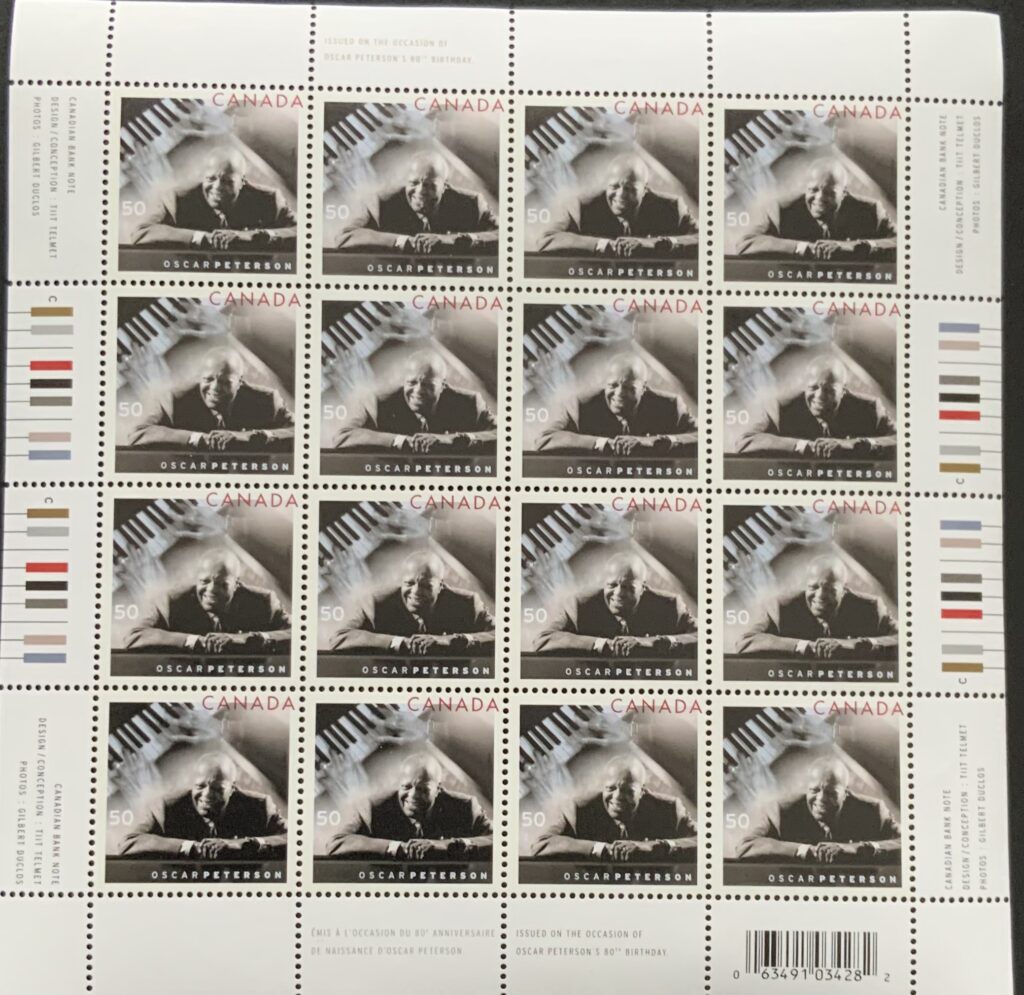
The process itself of creating the Oscar Peterson stamp was interesting as well. Telmet, using contact sheets provided by Montréal photographer Gilbert Duclos, designed the stamp so that it captured Peterson’s hands in motion. This small detail indicated the pianist’s grace, technique, and “speedy fingers” on the piano.
Other series of his include those for historic land vehicles—a comprehensive series spanning twenty-four stamps that illustrated Canada’s vehicular history, from farm tractors to industrial machinery—and the centennial of the beginning of the Ukrainian mass migration to Canada—four stamps commemorating the struggles and contributions of Ukrainian immigrants, drawing from archival art and Ukrainian cultural motifs. Several of Telmet’s stamp designs can be found in the collection of the Canadian Museum of History in Gatineau, Québec.

Fotogalerii
Tiit Telmet’s stamps for Canada Post are national symbols, serving as tributes to the nation’s heritage, celebrating its people, achievements, and natural wonders. As Telmet made clear, stamps are “concentrated images that remind us of our history and culture.” They encapsulate a piece of Canada’s story and communicate that to the world, wherever the stamp may go.
As one discovers more about Telmet, you’ll find that his work extended beyond stamps. He collaborated on projects like the branding of Strewn Winery in Niagara-on-the-Lake and wayfinding systems for institutions such as the University of Toronto’s Scarborough campus. In addition, Telmet’s colleagues remark on his generosity and commitment to mentorship and the design industry on the whole. As a member of the Alliance Graphique Internationale and a Fellow of the Design Professionals of Canada, Telmet helped shape the future of graphic design in Canada.
As Telmet put it, design is “a way of life.” He found joy and fulfilment in the creative process, often describing his work as a “privilege.” Using one’s skills and passions in a way that interacts with people’s lives meaningfully and makes a positive difference—that’s the mark of a life well lived.
